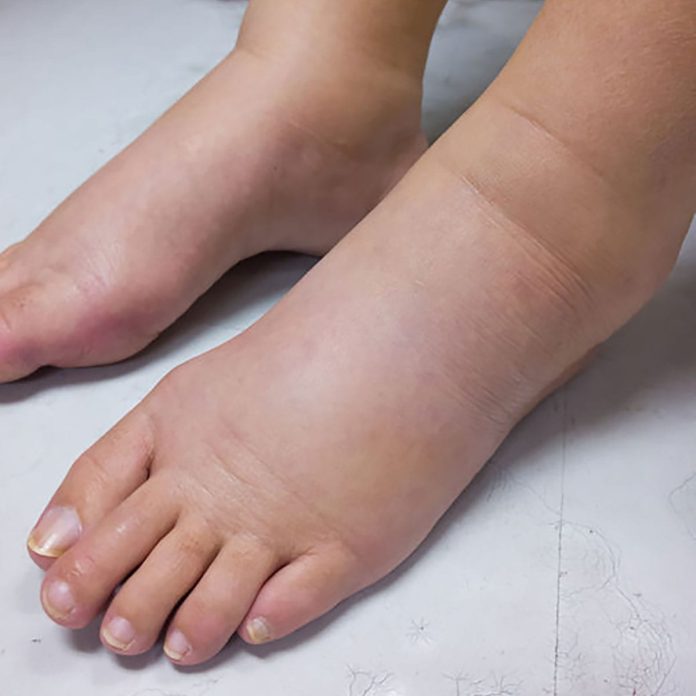The first step in treating sciatica is to see a doctor. The doctor can diagnose the underlying cause and suggest a specific treatment plan. Sciatic nerve swelling often indicates that a pinched nerve has been compressed. In some cases, the pain can radiate to the foot or ankle.
How do you get rid of sciatic nerve swelling?
The first step in getting rid of sciatica is to treat the underlying cause of the pain. Try applying an ice pack to the affected area. Doing this for at least 20 minutes a day can be beneficial. Moreover, icing will help in reducing the inflammation that is causing pain. Doing this twice to three times daily is best.
If you are suffering from sciatica, self-care methods are also effective in treating the condition. Keeping ice packs or hot packs on the affected area temporarily relieves the pain. Alternatively, you can also apply frozen peas wrapped in a towel.
How long does sciatica swelling last?
The treatment for sciatica involves relieving the pain and inflammation caused by the condition. Several methods are available, from over-the-counter pain relievers to physical therapy. Patients should consult with their healthcare providers for pain that does not respond to home treatments. In some cases, aggressive treatment may be required. However, most cases of sciatica resolve without medical intervention.
Sciatica is caused by pinched nerve roots that travel through the lower back and buttocks to the legs. The pain usually occurs in one leg. It may be acute or chronic. In acute sciatica, the pain lasts only a few days, while chronic sciatica lasts for weeks. If the pain persists for more than two weeks, it might signify chronic sciatica. If you suspect that you have chronic sciatica, consult a medical professional. They can prescribe medication to manage the pain or recommend surgery.
Can sciatica cause ankle and foot swelling?
A person experiencing tingling or burning in their foot and ankle may suffer sciatica. The condition can also cause weakness and numbness in their thighs and legs. The pain and swelling can be temporary or severe and cause more serious problems. The patient may be unable to walk or stand for long periods.
An initial medical evaluation is necessary to confirm the diagnosis and to determine the best treatment. A doctor will look at the symptoms and do a physical examination to determine the cause of the pain. A doctor may order imaging tests and perform a neurological examination if the symptoms persist. An MRI may also reveal an abnormality in the area where the sciatic nerve runs, such as a disk herniation.
Can a pinched nerve cause swelling?
Pinched nerves can be extremely painful and affect one’s quality of life. They are most common in older adults and can be caused by several factors, including arthritis and spinal degeneration. The most common symptom is pain, often in the pinched nerve area. However, some pinched nerves can cause radiating pain that can be felt in other areas of the body.
A doctor can treat the pinched nerve with injections of steroid medication, which will help reduce the swelling and allow the nerve to heal. Physical therapy is also important to help stretch and strengthen the muscles. In some cases, surgery is necessary.
What are the symptoms of L5 nerve damage?
If you have an L5 nerve problem, there are several symptoms to watch out for. One of these symptoms is back pain. Another is leg weakness. You may also feel numbness in the foot. Both may be signs of L5 radiculopathy. These symptoms are often accompanied by sensory loss and atrophy of the extensor digitorum brevis and tibialis anterior leg muscles.
The L5 nerve is the most commonly affected nerve root in the lumbar spine. This nerve innervates the tibialis anterior, foot and toe dorsiflexor, peroneal muscles, and gluteus medius. It causes weakness in these muscles and leads to pathological gait. When the L5 nerve is pinched, it causes pain along the L5 distribution, radiating down the back of the thigh and into the foot.
Conclusion
Sciatic pain often starts in one leg but can then extend to both legs, into the buttocks, and down to the feet and toes. Addressing your sciatica today can help you get relief from your foot pain and swelling tomorrow. A low back condition, such as a herniated disc, degenerative disc disease, or spinal stenosis, can cause pressure or a pinch on the sciatic nerve. Sciatica is a form of nerve pain that affects the area between the hips and knees. These messages travel as impulses along the nerve roots of the spinal cord, which sits inside the hollow part of the spinal column.
Moderate to severe pain in your lower back, buttock, and down one leg. The piriformis syndrome, first described 60 years ago, is a well-recognized cause of sciatica, leg pain, and low back pain due to the entrapment of the sciatic nerve in the piriformis and other rotator muscles. Piriformis syndrome can also cause pain in the lower back and swelling in the affected leg.
Some people also have numbness, tingling, or muscle weakness in the leg or foot. Experiencing swelling in your legs could result from sciatic nerve pain—but it’s not the most likely cause. Suppose you exhibit significant pain, redness, warmth, and swelling in your legs or experience fever, chills, nausea, vomiting, or diarrhea. In that case, you should seek immediate medical attention as these are signs of an infection.
Sometimes, sciatic nerve irritation can cause significant swelling in the leg, leading to increased pain and discomfort in the feet when walking or standing. From a medication reaction to arthritis-related fluid retention to prolonged sitting, there are many more probable reasons for leg swelling.

Doctor Osvaldo Pepa, Neurosurgery Service Physician at Hospital San Martin, La Plata, Argentina. I graduated last November 16, 1984 with a Medical Degree at the Universidad Nacional de La Plata. The Medical Board of La Plata, District 1, licensed me as a Neurosurgeon in 1990. I hold a Provincial and National License and an active member of the Neurosurgery Society of La Plata, World Ozone Therapy Federation, and Inter American Society of Minimally Invasive Surgery.







